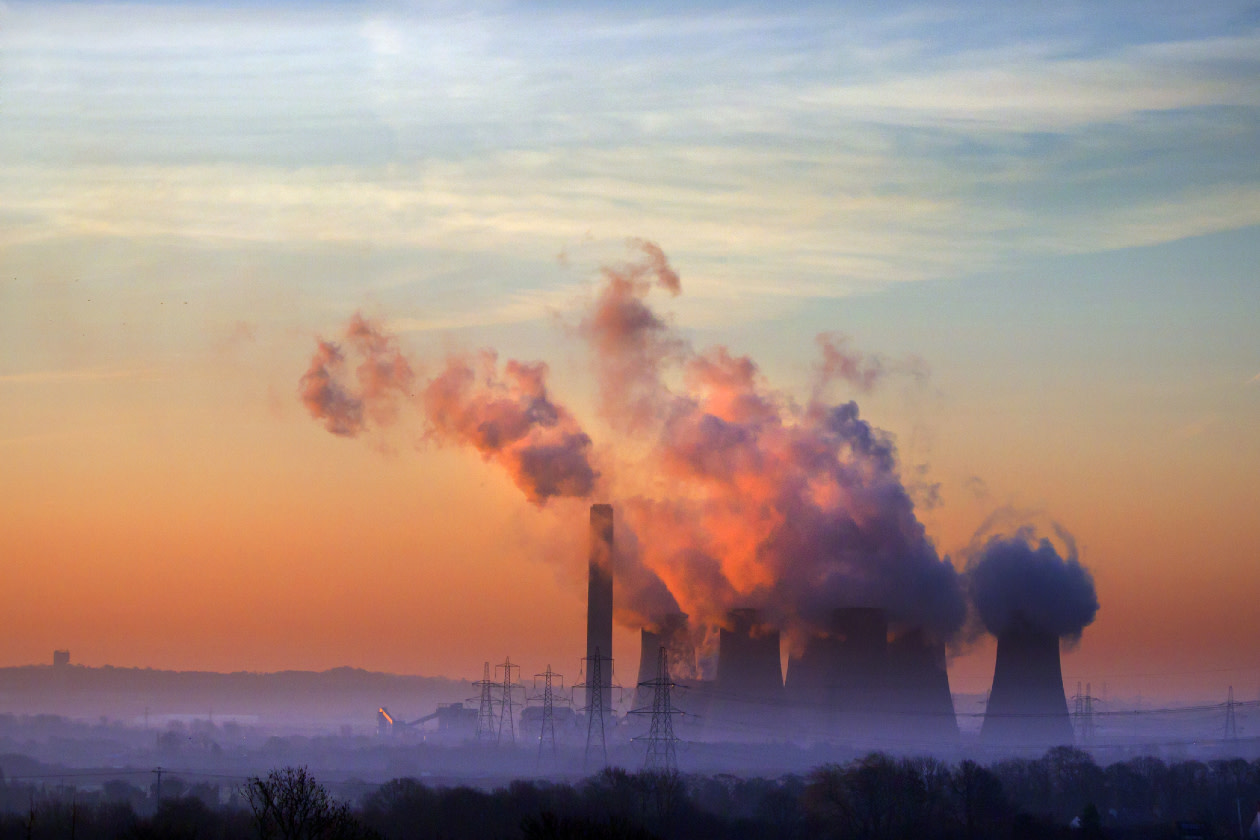The 30th annual UN climate change conference (COP 30) is taking place in Brazil this year. The president for COP 30 has already made clear that the event “must be the COP of adaptation”.
And as temperatures continue to rise, so does the need for companies to adapt.
In the face of climate change, population growth and increased urbanisation, we look at how two infrastructure operators are being exposed to, and tackling, escalating resilience challenges.
This article isn’t personal advice. If you’re not sure an investment is right for you, seek advice. Investments and any income from them will rise and fall in value, so you could get back less than you invest. Ratios also shouldn’t be looked at on their own.
Investing in an individual company isn’t right for everyone because if that company fails, you could lose your whole investment. If you cannot afford this, investing in a single company might not be right for you. You should make sure you understand the companies you’re investing in and their specific risks. You should also make sure any shares you own are part of a diversified portfolio.
Changing the focus to adaption
In 2015, 195 countries adopted the Paris agreement, an ambitious and transformative global treaty aiming to limit the rise of global temperatures to 1.5°C above pre-industrial levels, or at least well below 2°C.
Reducing emissions, and thereby limiting temperature rise, is known as climate mitigation. Mitigation is an area that has dominated the climate agenda in the decade following 2015, visible in the clean energy boom and the wave of corporate emissions targets.
But the debate is showing signs of shifting. Now, there is an ever-sharpening focus on climate adaptation – adapting to the negative effects of a warmer world.
In early October, the UK government was advised to prepare for extreme weather as a result of at least 2C of global warming by 2050. Flood risk currently threatens 8 million households in the UK, costing £2.4bn a year in direct physical property and infrastructure damages, or over £6bn when accounting for loss of potential investment and growth.
Across the pond, long time climate advocate Bill Gates grabbed headlines by u-turning on the importance of climate mitigation, shelving his former passion project and instead advocating for adaptation to take the wheel.
Part of COP 30 will likely be tackling the $187bn-359bn financing gap that the UN Environment Program has identified. This is the estimated range needed per year to meet adaptation costs and financing needs for developing countries this decade. This number looks fairly modest compared to the cost of inaction. One US insurance firm suggests each dollar not invested in disaster resilience today could result in up to $33 of lost future economic activity.
But with risk comes opportunity.
The World Economic Forum projects that the market for climate adaptation solutions, ranging from weather intelligence to weather-resilient building materials, could expand from around $1tn today to $4tn by 2050. Companies that can either contribute to adaptation solutions or who might receive future support from the public sector could be poised to benefit from a renewed wave of adaptation enthusiasm.
Sectors already grappling with population growth and increased urbanisation will have to ensure they are both ambitious on mitigation and prudent on adaptation. Both present different types of risks and opportunities but are crucial to long-term shareholder value.
We look at two companies that will be on the frontline of adaptation in the UK, and how they are responding to the resilience challenge.
National Grid
As the energy sector moves towards decarbonising and electrifying heat and transport, the pressure to protect the long-term resilience of our electricity system is growing. Climate change, heatwaves, and stormier weather all present challenges to keeping this critical infrastructure operational.
As the owners and operators of the electricity transmission network in the UK and parts of the US, National Grid is having to adapt quickly. Cameras and sensors are being deployed in coastal areas to monitor erosion and corrosion risks, helping to gather data and avoid business disruptions.
Innovation’s a key part of the plan too. With National Grid’s networks spanning thousands of kilometres of overhead lines, traditional inspection methods can be time-consuming, costly and sometimes hazardous.
That’s where its new fleet of drones come in. By taking on these routine inspection tasks, drones reduce the need for scaffolding, cherry pickers, and manual climbs, freeing up skilled line workers for more complex jobs that require human expertise. This is resulting in faster, safer and more efficient inspections to help keep the power flowing to millions of homes across the country.
The underlying business is in good shape too. National Grid reported a 13% rise in underlying operating profits over the first half. Performance was driven by a strong performance in the US, and increased inflation-linked revenues in the UK.
The group’s working hard to plant itself at the heart of the electric revolution. Infrastructure investment is set to rise sharply to around £60bn over the five years to March 2029 - nearly double the previous five-year total.
After issuing £7bn of new shares last year, the balance sheet remains in good shape. Alongside fairly reliable revenues, we don’t see any issues with National Grid’s ability to fund its infrastructure investments.
We’re positive on the long-term outlook for National Grid, and commend its willingness to pounce on shifting energy trends. The sheer scale of the investment plans brings with it increased execution risks though, so some volatility along the way is to be expected.
United Utilities
With climate change causing unprecedented amounts of rainfall, resilience is one of the key issues facing the UK water industry. Inadequate investment in infrastructure has led to flooding, service interruptions and increased amounts of untreated sewage flowing into our waterways in recent years, resulting in fines for many UK water companies.
United Utilities provides water and wastewater services to 1.4 million customers in the Northwest of England. Broadly, it has a strong track record of delivering good service to customers, receiving an Outcome Delivery Incentive (bonus payment) in each of the last five years.
However, there was a notable spike in minor pollution events in 2024, as well as one major incident. With a higher bar now being set by regulators on environmental issues following serious public pressure, United Utilities looks set to fall short of the regulators’ expectations this year.
In a bid to clean up its act, United Utilities plans to spend over £13bn expanding and upgrading its infrastructure between 2025 and 2030. These plans include replacing around 950km of old pipes and water mains to improve its resilience to droughts and extreme rainfall. Additionally, its plans commit £2.4bn to reduce storm overflow spills by at least 60% by 2030, including investment in nature-based solutions and the removal of surface water
The balance sheet remains stable, with debt levels in the middle of the group’s target range. This helps support its ambitious investment plans in the coming years. However, United Utilities still needs to raise a large chunk of cash, which will likely push debt levels towards the top end of its target range.
That’s not something we’re worried about though. Regulators have agreed to a 32% increase in pricing by 2030 to help fund investment commitments, so the extra spending looks well covered for now. Its rising revenue alongside a tight grip on costs helped underlying operating profits jump 22% higher to £634mn last year.
All in, the group runs a tight ship, with some of the best margins relative to peers. Its regular cash flows and inflation-linked revenue are enviable assets to have in an uncertain environment. But adverse weather and sewage leaks could continue to present challenges, and increase the risk of reputational damage.
If you want to learn more about sustainability related risks and opportunities, you can watch our ‘Good Money Week’ webinar.
This article is original Hargreaves Lansdown content, published by Hargreaves Lansdown. It was correct as at the date of publication, and our views may have changed since then. Unless otherwise stated estimates, including prospective yields, are a consensus of analyst forecasts provided by LSEG. These estimates are not a reliable indicator of future performance. Past performance is not a guide to the future. Investments rise and fall in value so investors could make a loss. Yields are variable and not guaranteed.
This article is not advice or a recommendation to buy, sell or hold any investment. No view is given on the present or future value or price of any investment, and investors should form their own view on any proposed investment.


